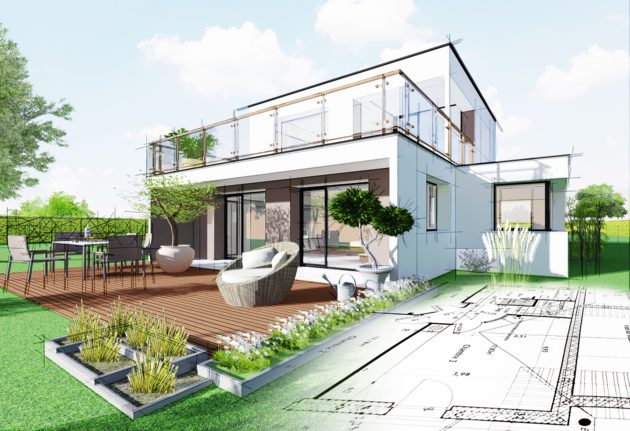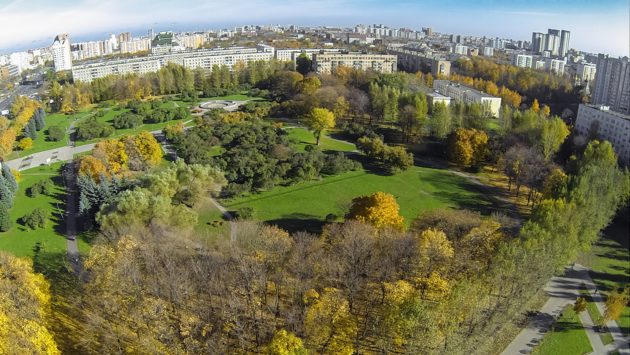A recent cultural shift in the world of architecture has resulted in more and more homebuilders and homebuyers alike seeking to develop housing that is in tune with the local landscape rather than seeking to work against the natural world. But there are quite a few benefits to designing your modern home with the environment in mind, including reducing the risk of weather damage that could cause you to claim on home insurance, and enhancing the comfort of your home interiors by making sure that your home is actually built. Specifically with the local climate in mind, which can reduce a family’s spending on heating and other utilities.
So how can younger generations of prospective homeowners ensure that their future homes are designed with the environment in mind? We’ll identify 6 key environmental factors to consider to absolutely ensure your new home is built and designed with a greener future in mind.

1. Local weather patterns
Local weather conditions are naturally a major concern for many home builders, especially in areas that experience weather fluctuations such as extreme heat in summer and frost in winter. Simply put, a dwelling that is not equipped with the proper features for protection from the elements is not likely to be a comfortable place to live.
Considerations of local weather patterns will likely determine the insulating materials used when building any residential property, as will the type of windows installed on the home. For example, areas prone to receiving frost with the lowest temperatures on record are likely to be fitted with insulated double-glazed windows to help retain heat and reduce heat transfer.
Besides home insulation and window design, local climatic conditions may also dictate the building materials used in building a home. Since metal corrosion is such a concern in coastal environments, home builders developing beachside properties generally tend to use treated woods or corrosion-resistant metals such as coated or treated steel and copper alloys, although copper is much rarer as a building material.
2. Solar orientation
The placement of windows on any new home will also likely take into account the solar orientation of each of that property as well as the space in which it is set to reside. Designing with solar orientation in mind can actually provide a myriad of benefits, including enhancing your new home’s ability to practice natural temperature regulation (through the use of passive heating and cooling theories), and reducing the likelihood of having to contend with sun glare or sun damage. In your home.
It is also important to note that due to the Earth’s axis, the Sun is placed at a northerly position in the Southern Hemisphere, and a more southerly position in the Northern Hemisphere. For this reason, it is common to see more south-facing windows for bedrooms in modern home buildings in the Southern Hemisphere, and north-facing windows for bedrooms in the Northern Hemisphere. This is done to reduce the overall exposure to sunlight in the bedrooms, thus making it less likely that these rooms will retain heat during the day.
Although tree cover may limit the property’s exposure to sunlight, these natural barriers against the sun should in no way be considered fixed. Trees can be clipped and cut down, which can result in increased exposure to sunlight and natural light for the property.
3. Energy efficiency
We touched briefly on passive heating and cooling when discussing design with solar orientation in mind. In fact, passive heating and cooling involves a lot more than just putting windows in. The incorporation of vents, wall, ceiling and floor insulation, and even certain building materials can all play a role in enhancing the passive cooling and heating characteristics of any modern home. In turn, equipping your home with these qualities can also help reduce your home utility costs significantly, as you will not have to rely so heavily on gas or electric heating and cooling systems in order to keep the interior spaces of your home nice and comfortable all year round.
Choosing appliances that are fitted in your home (such as dishwashers, air conditioners, etc.) based on their water and energy ratings may also help support the overall energy efficiency of your modern home. Similarly, environmentally conscious homeowners can install solar panels on their rooftops. As you might imagine, it is best to install solar panels on north-facing roof slopes in the Southern Hemisphere and south-facing roof slopes in the Northern Hemisphere because of the contrast between sun exposure and positioning in the Northern and Southern Hemispheres.
4. Public transportation and accessibility
If you are looking to build your new home on the outskirts of a larger city center, then connectivity is probably a concern for you. Ensuring that your home has access to a strong public transportation network can help your family keep their personal carbon footprints to a minimum. By contrast, building your home in a location that requires you and your family to rely more on personal transportation will naturally increase your home’s total greenhouse gas emissions, along with your fuel consumption.
Assessing the accessibility of your home should also include mapping out all the routes that can take you home during rush hour traffic conditions. Bottle traffic is a common problem for many homeowners looking to build their homes on growth lanes or on the outskirts of city centers. If you’ve done your due diligence and find that you have a healthy range of travel routes (including roads and public transit options) to help you get home, or you’re aware that additional routes are in development, you’ll need to find living in your new area to be more comfortable.

5. Proximity to green spaces and wildlife paths
Besides considering the position of your future home in relation to public transportation and road networks, it’s also worth assessing how close your property will be to local green spaces and wildlife corridors. This is particularly important for two main reasons.
First of all, having green spaces near you can be a key component to keeping you and your family happy and healthy. Environmental scientists and psychologists working in developing cities around the world have found strong correlations between residents’ mental health trends and their access to urban green spaces.
Second, and on a more serious note, local waterways such as streams running through greenways may be at risk of flooding during extreme weather events. If your property is located near a catchment area for bays or rivers, you should be sure to do a little independent research to identify any instances of flooding in the past decade in particular, and to assess the flood risk of your home or wider neighborhood during times of increased rainfall.
It is also important to maintain awareness of the animals you are likely to encounter on wildlife trails. For example, there are a growing number of cities and towns in North America that must be wary of bears entering urban spaces. Likewise, suburbs across urban areas in Australia are likely to see plenty of wild kangaroos, possums, and perhaps even some native and protected bird species.
6. Sustainability rating of building materials
Last but not least, assessing the sustainability rating of building materials used in home construction is an essential procedure for homebuilders looking to develop properties that have a low carbon footprint. Regardless of whether you are building a property in Europe, the Americas or Oceania, you will always have a variety of building materials to choose from. The problem with imported materials is that they usually come with a larger carbon footprint due to the greenhouse gases generated by the transportation activity.
You can keep the carbon footprint of building your home to a minimum simply by selecting locally sourced materials wherever possible. Organic materials such as locally sourced lumber can also help reduce your home’s carbon footprint, possibly keeping overall construction costs reasonably low.
With all of these environmental factors in mind, chances are high that your new home will not only be green, but will also be built for the future, both in terms of its structural integrity and thus the longevity of your property, as well as to meet your family’s comfort needs from season to season.
